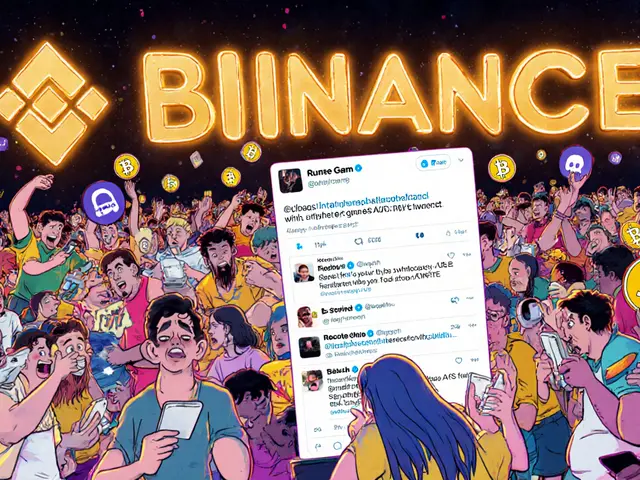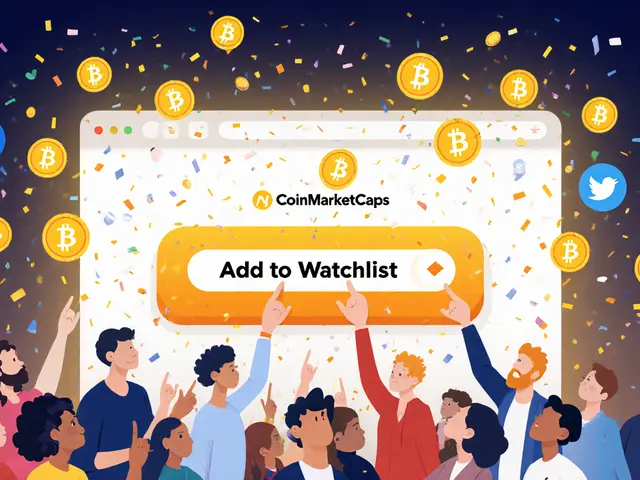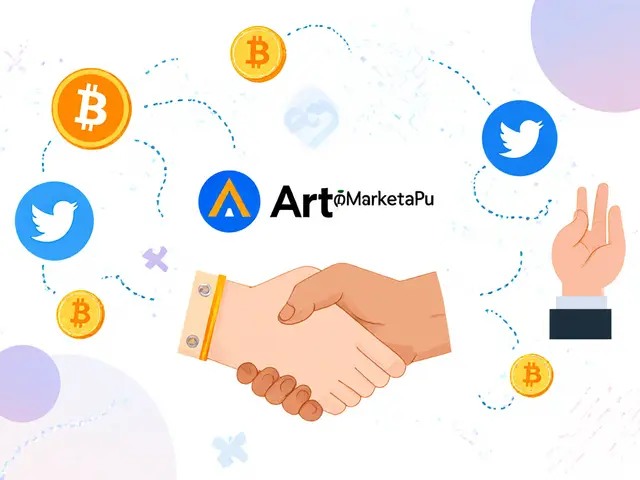Airdrop Eligibility Calculator
Based on the article: The airdrop required 6 mandatory steps to qualify for the $70,000 prize pool of NFTs.
-
Add RUNE to CoinMarketCap watchlist
Required
-
Follow @RuneMMO on Twitter
Required
-
Like and retweet official tweet
Required
-
Tag 3+ friends in retweet
Required
-
Use hashtags #BSC, #BSCgems, #playtoearn, #Binance
Required
-
Join official Rune Telegram group
Required
-
Join official Rune Discord server
Required
-
Subscribe to newsletter (optional)
Optional
Check all boxes above to see eligibility
Back in 2021, if you were active in crypto Twitter or Discord, you probably saw the RUNE.GAME airdrop everywhere. It was everywhere - pinned tweets, Telegram groups, Reddit threads. People were scrambling to follow, like, retweet, join servers, and add tokens to their watchlists. For a few months, it felt like everyone was chasing free NFTs and in-game items. But here’s the thing: that airdrop is long gone. Closed. Finished. And if you’re looking to claim it now, you’ll just see a message saying, "It looks like you are too late."
So why does this matter today? Because understanding how campaigns like this worked helps you spot the real opportunities - and avoid the dead ends. The RUNE.GAME x CoinMarketCap airdrop wasn’t just a random giveaway. It was a blueprint for how early GameFi projects tried to build communities, and it shows exactly what you need to watch for when the next one pops up.
The campaign ran from late July to September 8, 2021. Total prize pool? $70,000. That was split among 1,000 winners. That’s $70 per person on average - not life-changing money, but enough to get people excited. The rewards weren’t cash. They were NFTs. Specifically, one RUNE NFT per winner. These weren’t just digital art. They were playable characters - blockchain-based heroes you could use inside the RUNE.GAME MMO.
This was the heart of the pitch: "Own your stuff." In most games, your skins, weapons, and levels disappear when you quit. RUNE.GAME claimed you’d actually own your characters as NFTs. That meant you could trade them, sell them, or use them across future games built on the same system. It was part of the bigger play-to-earn wave that exploded in 2021 - think Axie Infinity, but with less hype and more Binance Smart Chain.
To qualify, you had to do a lot. Not just one or two things. You had to hit at least six steps:
- Add RUNE (the token) to your CoinMarketCap watchlist
- Follow @RuneMMO on Twitter
- Like and retweet the official airdrop tweet
- Tag at least three friends in the retweet
- Use the hashtags: #BSC, #BSCgems, #playtoearn, #Binance
- Join the official Rune Telegram group
- Join the Rune Discord server
- Subscribe to their newsletter (optional but encouraged)
The optional step? Visiting rune.game. That’s right - you didn’t even have to play the game to qualify. Just sign up for the social channels and do the tweet dance. That’s how most airdrops worked back then: growth through noise, not gameplay.
The campaign ran on Binance Smart Chain (BSC). That wasn’t random. Ethereum was expensive. Transaction fees were sometimes over $50 just to mint an NFT. BSC kept fees under $0.10. That made sense for a game where players might buy, sell, or upgrade dozens of NFTs a week. BSC was the go-to chain for gaming projects in 2021 - fast, cheap, and easy for new users to join.
CoinMarketCap’s involvement gave the whole thing credibility. They weren’t just a passive partner. They promoted it on their homepage, in newsletters, and on their social feeds. For users, it felt safer. If CoinMarketCap was behind it, maybe it wasn’t a scam. That’s the power of association. A well-known platform lending its name to a new game meant more people showed up.
But here’s what nobody told you: airdrops like this aren’t about the reward. They’re about the data. Every person who joined the Telegram group, followed the Twitter account, or subscribed to the newsletter became a lead. That’s how the team built their community. They didn’t just give away NFTs - they built a mailing list of 10,000+ people who cared about blockchain games.
By the time the airdrop ended in September 2021, the GameFi bubble was already starting to deflate. Axie Infinity’s daily active users peaked that summer. Prices for NFTs began to slide. Investors started asking: "What’s the real utility?" RUNE.GAME never fully answered that. The game launched, but it never got the traction of Axie or The Sandbox. The NFTs you won? Most of them are now worthless. The Discord server is quiet. The Twitter account hasn’t posted since 2022.
So what’s the lesson here? Airdrops are a tool, not a treasure. They’re a way for new projects to get attention, not a guaranteed path to wealth. The real value isn’t in the NFT you get - it’s in the community you join and the project you stick with. If the team doesn’t keep building, the NFTs turn into digital dust.
You can still visit rune.game today. The site loads. The game still runs. But the player count? Barely any. The economy is dead. The NFTs you could’ve won in 2021? You can’t claim them anymore. And even if you could, they’re not worth anything now.
This isn’t just about RUNE.GAME. It’s about how the entire crypto gaming space evolved. In 2021, you could get rich by doing a few Twitter retweets. In 2025, that’s not how it works anymore. Projects now need real gameplay, real economies, and real players who stick around. Airdrops still happen - but they’re smarter. They reward active users, not just social media scammers.
If you’re looking for the next big airdrop, don’t just chase free NFTs. Look for teams that are still shipping updates. Check if their Discord is active. See if they’ve launched new features. Ask yourself: "Would I still play this game if there were no airdrop?" If the answer is no, walk away.
The RUNE.GAME airdrop was a snapshot of a moment - the peak of hype, before the crash. It’s a case study in how not to build a lasting game. But it’s also a reminder: the best rewards aren’t given. They’re earned by staying in the game long after the free stuff runs out.



Arthur Coddington
Remember when people thought NFTs were the future and not just digital trading cards with a blockchain sticker? RUNE.GAME was the poster child for that delusion. You did the tweets, joined the Discord, and got an NFT that now sits in your wallet like a dusty relic from 2021. The game never mattered. The hype did. And now? Silence.
Phil Bradley
It’s funny how we all got swept up in the ritual - follow, like, retweet, tag three friends, join the Telegram, subscribe to the newsletter - like we were performing some sacred crypto rite. And for what? A pixelated hero that couldn’t even run without lagging. We weren’t building a game. We were building a mailing list for someone else’s exit scam.
Michelle Elizabeth
I didn’t even bother. I saw the tweet chain and thought: ‘This is what capitalism looks like when it’s been reduced to a TikTok challenge.’ The NFTs weren’t art. They weren’t assets. They were digital confetti tossed at a funeral for real innovation.
Joy Whitenburg
lol i remember trying to do all those steps and then realizing i had no idea what the game even looked like. i just wanted free stuff. and now? i just laugh. the whole thing was like a digital carnival ride that stopped spinning and left everyone holding a broken ticket.
Kylie Stavinoha
The RUNE.GAME episode is a cultural artifact of the Web3 fever dream - a moment where the allure of ownership collided with the reality of empty promises. It wasn’t about the NFT. It was about the illusion of participation. We mistook visibility for value, and noise for network. The lesson? Authentic community is built through consistent action, not performative compliance.
Diana Dodu
USA built the internet. USA built crypto. And USA built the only real GameFi projects - not this garbage from some anonymous dev team on BSC. You think this was a scam? No. It was a warning. America doesn’t need your half-baked NFTs. We need innovation, not Twitter bingo.
Raymond Day
OMG. I DID ALL THAT. I followed. I retweeted. I tagged. I joined. And then I got NOTHING. Like… literally nothing. My NFT is just a JPEG that says ‘Rune Hero #427’ and it’s worth less than my expired Starbucks gift card. This was a trap. A social media trap. A scam. A joke. A tragedy. 😭
Noriko Yashiro
Actually, this is a really good case study. I work in digital marketing and this was textbook. They didn’t want users. They wanted data. Every person who joined that Discord was a potential customer for the next project. The NFTs were bait. The community was the product.
Atheeth Akash
It's true, many of us were excited back then. But now I understand: real value comes from people who keep building, not from people who just tweet. I still follow some projects that didn't do airdrops - they just made good games. That's the real win.
Rebecca Saffle
Don’t even get me started. I lost hours of my life to that nonsense. I even told my mom about it. She thought I was building the next Minecraft. Now she thinks I’m a crypto idiot. I hate this world.
Adrian Bailey
Man, I still have that NFT in my wallet. I don’t even open it anymore. But every time I do, I remember how dumb I was. I thought I was getting in early. Turns out I was just early to the graveyard. Still, I’m glad I learned. Now I check if the devs have pushed a commit in the last 6 months before I even click ‘join Discord.’
Rachel Everson
Hey, don’t beat yourself up. We were all caught up in the wave. The real win is that you’re here now, thinking critically. That’s how you survive the next cycle. Look for teams that ship updates, not just airdrop graphics. The ones who stick around? They’re the ones worth betting on.
Johanna Lesmayoux lamare
It’s sad. People still chase these things. But you’re right - the only thing left is the silence.
ty ty
Wow. So you did all that for a JPEG? Congrats. You’re the hero of the digital wasteland. Next time, just buy a lottery ticket. At least the odds are better.
BRYAN CHAGUA
Thank you for writing this. It’s rare to see someone articulate the emotional arc of the 2021 crypto bubble - the hope, the hustle, the hollow outcome. The real tragedy isn’t the lost NFTs. It’s the lost trust. We believed in the dream. And that’s harder to recover than any wallet.
Debraj Dutta
Yes, the game failed. But the lesson remains: always ask if the team is still working. If the Discord is dead, walk away. Real projects don’t need airdrops to survive. They survive because people love them.